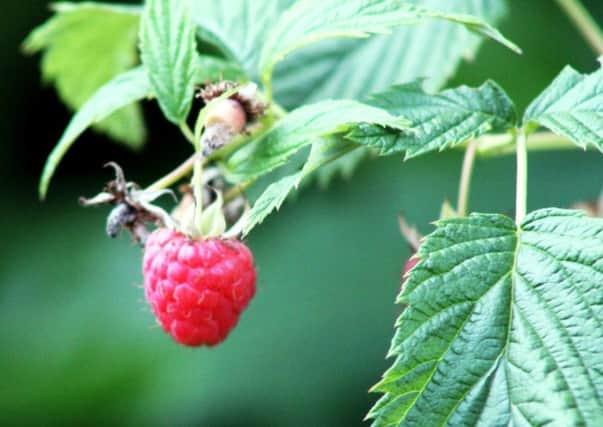Just desserts


The latter grow prolifically during the summer months; the former ripen during the late summer and can continue to crop until the first frost.
And although they are both raspberries, they have very different growth cycles. Summer-fruiters grow on canes produced the previous summer; the autumn raspberries grow on shoots produced during the current summer. So that’s why, after fruiting, you need to cut those canes down to ground level. Right now the hardest work is in preparing to plant bare-rooted raspberry canes.
Advertisement
Hide AdAdvertisement
Hide AdIf the weather allows, get the site ready by digging out weeds and digging in plenty of well-rotted manure because raspberries do a lot of growing in a year and they are voracious feeders.
Raspberries are best grown in rows against supports. In a large garden, hammer in a tree stake at the ends of each row. With the summer varieties, drill holes into the posts and stretch three rows of galvanized wires between them. The autumn varieties tend to grow shorter and stronger so they can make do with just two wires.
In a small garden, grow shorter rows or simply hammer a stake (about 8-9ft) into the ground and plant a couple of raspberry canes at the base. Allow nine or 10 canes to grow up and tie them in.
The planting depth is important – the old soil mark on the stem should be at the same level as the ground after planting. Then spread out the roots and firm them in. Plant canes 18in apart.
Advertisement
Hide AdAdvertisement
Hide AdNow get out the secateurs and cut the newly-planted canes to nine inches above the soil. It may seem like vandalism, but this is to encourage strong new growth for future years.
And it will also pay dividends to leave this year’s crop of fruit untouched; in fact, remove temptation by removing the flowers as they appear – the plants will grow stronger and you can start cropping them the following year.
Always keep the plants well watered and protect them from birds – they, too, love a tasty raspberry and can devastate a crop.